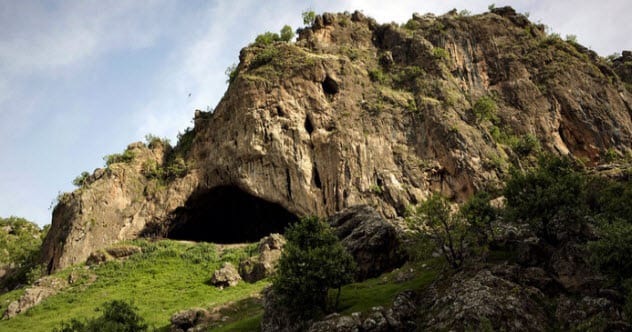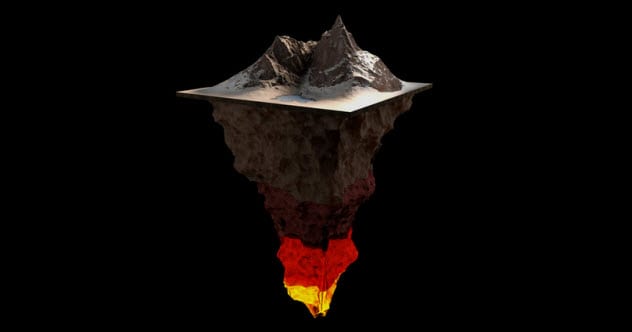 Movies and TV
Movies and TV  Movies and TV
Movies and TV  Health
Health 10 Miraculous Advances Toward Curing Incurable Diseases
 Miscellaneous
Miscellaneous 10 Undeniable Signs That People’s Views of Mushrooms Are Changing
 Animals
Animals 10 Strange Attempts to Smuggle Animals
 Travel
Travel 10 Natural Rock Formations That Will Make You Do a Double Take
 Movies and TV
Movies and TV 10 Actors Hidden in Your Favorite Movies
 Our World
Our World 10 Science Facts That Will Change How You Look at the World
 Pop Culture
Pop Culture 10 Incredible Female Comic Book Artists
 Crime
Crime 10 Terrifying Serial Killers from Centuries Ago
 Technology
Technology 10 Hilariously Over-Engineered Solutions to Simple Problems
 Movies and TV
Movies and TV 10 Movie Adaptions That Brought Popular Songs to Life
 Health
Health 10 Miraculous Advances Toward Curing Incurable Diseases
 Miscellaneous
Miscellaneous 10 Undeniable Signs That People’s Views of Mushrooms Are Changing
Who's Behind Listverse?

Jamie Frater
Head Editor
Jamie founded Listverse due to an insatiable desire to share fascinating, obscure, and bizarre facts. He has been a guest speaker on numerous national radio and television stations and is a five time published author.
More About Us Animals
Animals 10 Strange Attempts to Smuggle Animals
 Travel
Travel 10 Natural Rock Formations That Will Make You Do a Double Take
 Movies and TV
Movies and TV 10 Actors Hidden in Your Favorite Movies
 Our World
Our World 10 Science Facts That Will Change How You Look at the World
 Pop Culture
Pop Culture 10 Incredible Female Comic Book Artists
 Crime
Crime 10 Terrifying Serial Killers from Centuries Ago
 Technology
Technology 10 Hilariously Over-Engineered Solutions to Simple Problems
10 Curious Facts Involving Canyons And Mountains
They may seem lifeless, but mountains, caves, and canyons are busy. Not just in a geological way, either. Unusual things are left there by strangers and billionaires alike.
Mountains also hold seed arks, a strange psychosis, and supernatural sightings. The earthier side is not to be outdone. From methane rivers to mountain ranges nobody can see, nature brings epic weirdness to the table.
10 Diving Mountains

When continental plates dive under each other, they trigger earthquakes and tsunamis, sometimes with devastating consequences on land. For a while, seafloor mountains were hailed as heroes. Earthquakes happen when plates slide under quickly and by a good length. Seafloor mountains could act like giant brakes slowing the process down.
The Cascadia subduction zone shot holes in that theory. Known for mind-bending quakes, it produced a magnitude 9.0 in 1700. Centuries later, in 2012, researchers searched for the origins of earthquakes in Oregon. They found the likely culprit, a Cascadia mountain submerged 30 kilometers (19 mi) offshore.
This chap dwarfed the Alps and moved slowly, taking a few million years to move 45 kilometers (28 mi) under the North American plate. Despite its snail habits and giant status, it probably caused Oregon’s shakes, the strongest of which measured a magnitude 4.8.
Oceanic mountains are now believed to be capable of producing great danger. While they can block plates, any temporary barricade is deadly. As soon as the mountain gives way, the pent-up energy pushes a massive piece of plate under and this could trigger a nightmare earthquake.[1]
9 New Finds At Shanidar

Shanidar Cave was used by Neanderthals, an extinct human cousin. Located in northern Iraq, the now-famous “flower burial” was discovered there in the 1950s. The grave contained three of the site’s 10 Neanderthal skeletons, and one was covered with pollen. The latter strongly suggested that Neanderthals buried their dead with flowers.
This changed how Neanderthals were viewed. Earlier, everyone had assumed they were cavemen with clubs. No more. In recent years, archaeologists have made a renewed effort to excavate Shanidar. In part, this was to solve the pollen controversy. As much as the “flower burial” gained ground, some doubted that it was evidence of ritualized funerals.
A new skeleton was found next to the pollen grave. Its position would have placed the missing lower body inside the flower group. Although the latest Neanderthal added little to the debate, it was nevertheless a remarkable find.
The recent excavations also showed that those in the “flower burial” were interred at different times from 60,000 to 90,000 years ago. Apparently, Shanidar had such significance for Neanderthals that they returned for several generations to bury their dead in the cave.[2]
8 Mantle Mountains

Earth is divided into three basic layers. There is the outer crust. At the center of the planet is the core. Sandwiched between them is the mantle. This middle layer hogs 84 percent of the world’s volume and is the birthplace of earthquakes and volcanoes.
A study released in 2019 revealed something amazing about this rocky layer. Old news inside the mantle is the “660-kilometer (410 mi) boundary.” This is the deepest point of a layer that separates the mantle into upper and lower halves.
New news inside the boundary is that it hides a secret feature—epic mountain ranges. Some are beefier than the Rockies and Appalachians. Not to be weird, but seismologists like earthquakes. They bring information from the depths where humans cannot go.
As quakes pass through the different materials, shock waves adopt different densities. By measuring the signature of an earthquake, scientists can see what is down there. Among the earthquakes studied was a magnitude 8.2 that hit Bolivia in 1994. Its signature helped to create a simulation of the boundary and revealed a scene similar to Earth’s surface mountains.[3]
7 High-Altitude Psychosis

Climbers risk their minds at altitudes over 7,000 meters (23,000 ft). There is no shortage of reports describing mountaineers going postal at this level. The most intense symptom is suffering from visual and auditory hallucinations.
One phenomenon is so frequently reported that it earned its own name, the “Third Man.” As the name suggests, a person senses that someone is with them. The condition’s extreme hallucinations worsen when climbers are alone.
Several other symptoms manifest—and match—those of high-altitude sickness. Apart from the hallucinations, there is dizziness, lack of coordination, and headaches. Indeed, for years, experts believed that the cerebral edema caused by high-altitude sickness was responsible.[4]
However, in 2017, a study analyzed 83 cases and determined that something else was going on. Whatever triggers the vivid hallucinations was a new medical condition. Called high-altitude psychosis, it differs from high-altitude sickness in a critical way. Once a psychotic climber descends to a lower altitude, all symptoms disappear as if they never existed. The cause remains a mystery.
6 Denali’s Poop Problem

Every year, over 1,000 climbers scale the tallest mountain in North America. Denali, which is also a national park, towers 6,000 meters (20,000 ft) above sea level. The mountain has gathered a staggering amount of human waste over the years. Between 1951 and 2012, it accumulated roughly 98,000 kilograms (215,000 lb).
Most besmirched crevasses on a path to the summit on the West Buttress of Kahiltna Glacier. Overall, the problem grew annually by 2,000 kilograms (4,400 lb), worsening the threat of glacial melt flushing the feces into the Alaskan watershed.
In 2007, park officials began dispensing the Clean Mountain Can. This plastic loo captures up to 14 bowel movements. Visitors were allowed to empty it across the glacier but only into very deep crevasses. Officials believed that the waste would decompose, but it never did.
During 2011 and 2012, the Kahiltna River in the glacier’s melt region tested positive for human waste. This prompted the park to change the rules. Scattering poop in any deep crevice was no longer allowed. These days, climbers can only empty their cans at two designated areas.[5]
5 Uranium At Grand Canyon

In 2018, a teenager with a Geiger counter walked near the Grand Canyon’s museum collections building. The counter spiked near three paint buckets. When investigators opened the 19-liter (5 gal) containers, they found uranium ore. The radioactive rocks had been left by somebody nearly 20 years ago and remained there until the Geiger counter came along.
What worried certain staff—to the point of accusing others of a cover-up—was that countless visitors had been exposed to dangerous radiation. School groups often sat nearby, listening to presentations for up to 30 minutes.
Shortly after the rocks were found, they were dumped in a local uranium mine. To the dismay of the more nervous staff members, the collections building was declared safe. A report stated that nobody had received a dangerous dose of radiation in all likelihood.
The real threat is prolonged exposure, like when miners work with uranium for years. Uranium ore emits three kinds of radiation, but only one escaped the plastic containers—gamma particles. The good news is that the human body can handle it in small doses.[6]
4 Liquid-Filled Canyons

Saturn’s largest moon is called Titan. In 2013, NASA’s Cassini spacecraft measured the moon’s surface. When astronomers analyzed the data, they found something remarkable—canyons with flowing liquid methane. The canyon rivers resembled those on Earth. This was odd, considering how different the two worlds are. (Titan is a frozen place.)
The newfound canyons measured an average of 0.8 kilometers (0.5 mi) wide and plunged to a depth of 579 meters (1,900 ft) at most. They snaked toward the moon’s main sea, also a liquid methane body.
Scientists are stumped. They cannot explain how the canyons formed. If they were carved by erosion like those on Earth, that slaps down another mystery—there is an enormous amount of missing sediment. When erosion eats into the walls and bottom of a forming canyon, the river carries the sediment off to lakes or oceans. Thus far, there are no signs of this.
Researchers really have no clue, except that the narrow shape of some canyons imply that formation happened rapidly.[7]
3 The Seed Vault

Some call it the “Doomsday Seed Vault.” Its real name, the Global Seed Vault, more accurately describes the structure’s purpose. Found in Svalbard, a Norwegian archipelago, it was never meant to safeguard crops from the end of the world.
Instead, those who conceived of the idea wanted the vault to be an insurance policy for biodiversity. Stacked with nearly every seed imaginable, it replaces lost crops anywhere in the world when necessary. Eventually, a good harvest or another source returns the same species to replenish Global’s stock.
The cycle serves everyone. One example is Syria. When the war-torn country lost its seed bank, the Global Vault restocked it in 2015. A few years later, around 50,000 new samples returned to Global, including the seeds they dispensed to Syria.
Svalbard was chosen due to its cold climate. The vault was built into a mountain to freeze the seeds naturally with permafrost. The storage rooms can be reached by a tunnel that stretches 130 meters (426 ft) deep into the mountain.[8]
2 Davelis Cave

North of Athens is a pyramid-shaped mountain called Penteli. On the southwest side is Davelis Cave. This vast grotto has a rich history of outlaws, military activity, and paranormal reports.
Many visitors claimed to have witnessed water dripping upward, disembodied voices, electronic interference, glowing orbs, and unknown creatures. Some found creepy carvings and satanic rituals.
Human traces in the cave go back centuries. During the fifth century, it was a shrine to the goat-footed god Pan. In medieval times, two Byzantine chapels were constructed inside the entrance. Nearby is a concrete building from the 1970s, which served as a Greek military outpost.
Nearly all the tunnels are barricaded. Conspiracy theorists claim that the military hid secrets inside. Geologists insist that the tunnels were closed because they posed a danger to visitors.
Just as mundane, the cave’s marble might explain some of the paranormal reports. The stone is a conductor of electromagnetic waves and produces electrical charges under high pressure. This could be why visitors experience disorientation and electromagnetic phenomena.[9]
1 The Giant Clock

Jeff Bezos, the founder of Amazon, bought a mountain in Texas. Bezos, who often rises to the top of the world’s richest list, wanted to put a clock inside the mountain. But not just any clock.
Decades ago, scientist Danny Hillis conceived of a special timepiece. It would tick once a year, and a hand would move every 100 years. A cuckoo would pop out every millennium. The clock itself would last 10,000 years.[10]
Bezos put down $42 million to realize the mechanical wonder. He was enamored with the idea that the 152-meter-tall (500 ft) clock would outlast the United States, several civilizations, and perhaps all known governing systems. In effect, Bezos, who teamed up with Hillis, wants to gift the clock to a future world that nobody can begin to imagine.
In 2018, installation began inside the Sierra Diablo site. To power the clock for 10,000 years, thermal energy will be harvested from the mountain’s natural day-night cycle. It can also be wound up by visitors.
Read some seriously eerie tales about mountains on 10 Creepy Unsolved Mysteries Of The Mountains and 10 Creepy Tales About Well-Known Mountains.








